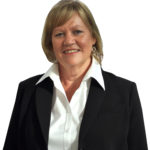Leading Learning and Development: Challenging and Championing Change
By Nancy Painter
Life is a learning experience, if you do it right.
In the work world, learning and development (L&D) help you learn what you need to know, and, in most organizations, HR makes L&D work.
But, as any HR professional can attest, there is no one-size-fits-all solution. From the L&D they require for success themselves to development at the highest levels of leadership, it falls to HR practitioners to identify the needs, justify the investment, then provide or source the solutions their organizations need.
Proving the Worth of Learning and Development
However, leaders are sometimes wary that they are spending L&D money to train staff for their competitors, because employees will take the learning and use it to find employment elsewhere. It’s a short-sighted many are learning does not serve them well.

Laura Turnheer, CPHR
“As human capital becomes more important, people expect their employers to invest in them,” explains HR professional Laura Thurnheer, CPHR, program chair and professor at Okanagan School of Business at Okanagan College.
“To compete in the employment marketplace, there needs to be a shift to recognize that it is a need for Millennials. It’s important to them and their value system,” says Thurnheer. “Employers need to expect and accept that if they offer opportunities for L&D, they’ll get a better employee, and that if employees are happy and feel valued, they will stay and be loyal.”
“Even among front-line employees, offering learning and development will create loyalty,” she adds. “It’s going to be a competitive advantage, especially in the next employee shortage that’s only a few years away.”
David Berrington, CPHR an HR strategic and operational consultant with Contact HR Consulting, as well as an instructor in management and professional programs in the Continuing Studies department at Simon Fraser University, sums it up with an old adage, “It’s a bigger risk not to invest in them and have them stay!”
Demonstrating ROI on L&D Investments
“In addition to plenty of anecdotal information, the evidence is in that there is a causal relationship between L&D and things such as high levels of people engagement, which

Nic Tsangarakis
in turn lead to visible business results,” according to Nic Tsangarakis, principal and co-owner of Kwela Leadership.
One of HR’s roles as a strong influencer at the executive level, he adds, is being able to develop clear business cases for L&D, including the return on investment (ROI), making sure that executives understand and embrace the link between L&D and its impact on the organization’s bottom line.
“We’re often guilty of not measuring the benefits of L&D,” Tsangarakis says. “It’s not easy to do, but it’s possible, anecdotally and quantitatively.”
Aligning Goals and Assigning Reviewers
Tsangarakis describes tools his consultancy has used and makes available to its clients. For example, at the beginning of the development process, participants will identify three or four areas in which they believe they can improve, such as providing feedback, handling conflict, giving direction to their team, etc. Their current behaviours and practices are documented.
As well, they identify individuals who would be able to recognize any improvement, who then become reviewers. The reviewers are surveyed again at the end of the program; the before and after measures illustrate the extent of behavioural change that has happened.
“We find it to be an incredibly powerful way to identify ways people have changed,” Tsangarakis says. “It also holds people accountable because they know the measurement is coming.”
Another method of measurement is to interview participants’ managers to document changes they have witnessed as a result of the L&D.
The ROI is obvious when the decision-makers in the organization are satisfied with the information and evidence of general improvement in factors such as engagement and customer satisfaction scores, he adds.
Different Strokes: Tailoring L&D to Varied Needs
For front-line employees, learning is most often practical or technical in nature, and standard for all employees at that level. Likewise, new employees are generally given standard instruction in organizational background and basic processes.
But, as employees move up the ladder within the organization, that changes. Working in the field of management and leadership L&D, Tsangarakis notes that employees who are promoted to management based mostly on their technical knowledge are “a perpetual challenge.”
“People at the individual contributor level are identified as having potential because they achieve results—but managers need other competencies and skills,” he explains. “The sooner one starts (management L&D), the better, but people tend to be promoted first, then provided L&D if they are lacking in the needed skills.”
However, all managers must be able to build stronger teams, provide coaching and feedback, organize and run better meetings, deal with conflict, and plan. “These are all teachable with associated skills and techniques, to help managers deal with their new responsibilities and requirements,” says Tsangarakis.
“One of the things we tend to do with new people managers is focus on their belief system and attitudes,” he continues. “When they do become managers of others, deep down they don’t really believe their job has changed. Part of what we do is help them understand that things really do change as they move to the next level. They now have to get things done through other people.”
The real challenge for managers, Tsangarakis adds, is managing interdependency. “They have multiple teams reporting to them, and they must become silo-busters.”

Dave Berrington, CPHR
Creating Alternate Paths of Promotion
Not every technically-proficient employee can become a good manager, but often management is the only upward path available in their organization. According to Berrington, it doesn’t have to be that way.
“Organizations need to do a better job of providing alternate routes that don’t require managing people,” he says. “People management shouldn’t be the only path. We need to be really honest and direct as to whether or not someone has the capacity to lead others, and we should have a ‘guru path’ for those who can’t lead but have great technical skills. Organizational success is dependent on internal expertise of both kinds.” In a truly bold organization, he adds, technical gurus would be paid as much as the CEO.
Engaging the Path Less Followed
Sometimes the L&D challenges for HR are a result of going down a different path to finding employees. Arlene Keis, CPHR, CEO of go2HR, knows all about that.
Established 15 years ago, go2HR is an HR industry association dedicated to helping solve HR issues within the tourism and hospitality industry.
A big challenge for the industry has been a shrinking pool of potential employees, so it turned to a new pool: recently or soon-to-be retired baby boomers.

Arlene Keis, CPHR
“We target baby boomers who are either about to retire or have recently retired, but who would like to remain engaged in something that’s more fun, and less corporate, than what they retired from,” Keis explains.
They aren’t alone in their strategy, she adds, pointing to Home Depot’s move to hire recently-retired tradespeople who have the knowledge to help their customers but don’t want to work full-time or in jobs as physically demanding as those they previously held.
Bringing Experience Back Into Play
Of the 1.2 million people aged 50 to 69 in B.C., those who are retired are often eager to follow up on existing hobbies or passions, from skiing and golfing to fine foods and wines.
For example, when Vancouver Island resort Tigh-Na-Mara advertised for people interested in working with a Red Seal chef, they got a dozen applicants whose love for and knowledge of fine foods made them ideal for buffet service because they could talk about the high-end foods they were serving.
Perks that go with the jobs are also often a big enticement for boomers—a ski hill pass for the person selling lift tickets, or free camping all season for helping take care of the campground, for example.
Tourism employment is often part-time or seasonal, which is fine with many retirees because it leaves them time to enjoy retirement and family. While some of them seek jobs after retirement because they need the money, more than half do it because they’ve found they don’t like retirement, they value the intrinsic rewards, or they want to feel needed or want to help out.
Educating Employers and Re-opening Doors
Retired boomers are usually already well-prepared with soft-skills such as customer service, Keis says, and the training they require is more likely to be technical in relation to their specific job. She points to someone who’s retired after 30 years of teaching grade one and is a part-time tour guide for local or day trips, who may have to learn how to drive the small bus.
Much of the technical training required is done on the job, she adds, just as it would be with any new employees who have to learn how to use the point-of-sale system, for example.
Boomers usually already have a place to live and transportation available, so two other factors that are often negative for younger employees are no problem for them.
Nonetheless, go2HR has had to educate employers, fighting myths that older employees are more likely to get sick or injured, that they don’t want to learn new things or technology, or that they want their younger supervisors’ jobs.
“There has to be receptivity on both sides” for the employment of retired boomers to work, Keis explains. As the labour market tightens up, there is the opportunity to provide L&D for the 18,000 tourism and hospitality employers in B.C. and shift the employment paradigm in their industry. go2HR offers a Baby Boomer Toolkit for employers on their website.
Moving On Up the Ladder
Back in the traditional workplace, as employees move on from management, their L&D needs change. Not only the content, but the delivery model, needs change for executive leadership.
Tsangarakis says his firm is increasingly using the 70-20-10 model in leadership L&D, which says that 70 per cent of learning comes from learning on the job, 20 per cent from others such as bosses, mentors, coaches or colleagues, and 10 per cent from formal settings.
In a program Kwela recently completed with a global bio-tech company, they worked with managers of managers—those at the director or VP level. Their 10 per cent formal training comprised five modules of two hours’ length that including teaching practical tools and techniques, but also deliberation, ample conversations, provocative questions and discussions. Participants had reading or video learning assignments to complete prior to the sessions, so that they could concentrate less on theory and move faster when in the actual two-hour sessions.
The rest of the program was based on specific, structured action-learning assignments, in which participants applied learnings from the modules in their workplace and sphere of influence, and reported back on their results at the next session.
“It’s a best practice in all L&D,” Tsangarakis says, “moving from one-off events and turning to a process where people take their learning back to the workplace.”
What’s important at the senior level, he adds, is that each module is designed around strategic challenges facing that specific group. L&D must happen within a strategic context, whether it’s concentrated on breaking down silos, building a strong culture or creating strong teams.
Identifying Senior Level Needs
Both Tsangarakis and Berrington list 360-degree reviews among their L&D tools for executive leadership, where the insights gained enable personalized coaching or help individuals understand what areas can be improved, or might never be their strength.
“Even a CEO or a COO isn’t expert in everything. Sometimes they need to bring in gurus,” Berrington explains.
“One of the most important aspects needed at that level is a strong sense of self-awareness,” he adds. “Truly effective leadership is only achieved when we understand what we don’t know, what we can’t do well. Effective leaders build teams around their strengths and weaknesses.”
Learning at the Executive Level
According to Berrington, executive-level leaders need to have several attributes:
- Understanding of the financial world at a more complex level than profit and loss, to include things such as investment and equity, developing financing, etc.;
- Vision, along with the ability to understand, articulate and communicate it;
- The ability to lead through others;
- Industry expertise (“You need a reputation inside and outside of the organization.”);
- High emotional intelligence, including empathy and self-awareness; and
- The ability to execute what you’ve envisioned, including making tough decisions when required.
Keis adds political astuteness to the list—keeping an eye on evolving issues and planning for what’s likely to happen. She cites as examples the coming legalization of marijuana, housing and transportation issues, and social media use.
Coaching and Mentoring Move Mountains
External experts are often brought in for executive development, both for confidentiality and because not every organization has the specific talent required for the job.
Executive coaching is often more all-encompassing, Berrington says, involving other aspects of their lives outside of work, another reason outsiders are often better than insiders to do it.
“When you’re working one-to-one you move forward much more quickly,” he adds. Executives are often inherently motivated to move forward, and also realize their organization is paying big dollars for the coaching, so “they can’t not do it.”
Less formal, mentoring is also important. Whether from their board of directors or others in their industry, leaders benefit from having strong, effective networks of people they trust and can go to when they have an issue.
Taking the Heart of HR to School
Of course, HR practitioners don’t just drop into L&D; they learn to take it to heart long before they can offer it to others.
At the Okanagan College School of Business, a ceremony this September marked the accreditation of its HR program by HRMA as equivalent in the nine practical areas required for the CHRP [now the Certified Professional in Human Resources or CPHR] designation. As a result, students who achieve a 70 per cent GPA in the entire program are exempted from the first national knowledge exam.
The accreditation is retroactive for three years, so previous grads are already benefiting from it, program chair Thurnheer explains.
Her entire eight-person faculty was involved in mapping their curriculum to ensure it was providing the learning outcomes needed for the accreditation, she adds. When they identified a gap, they designed a new course—HR Metrics and Analytics—which was more HR-specific than their existing metrics course. The accreditation helped them champion the new course, while ensuring they were offering students what they need to work in the industry.
HRMA has similar collaborative agreements in place with the British Columbia Institute of Technology, Camosun College, Kwantlen Polytechnic University, and is in discussion with a number of other post-secondary institutions.
HRC West Brings Out the Best
While there is much that HR practitioners have to learn on the job, Thurnheer explains, “Your education is a building block and equally as important. There is lots you need to learn through experience, support and mentoring, but students are better prepared with a grasp of the basics.”
Her students get an opportunity to put their learning to a practical use in the HRC West case competition, sponsored for HR students by the western Canadian HR associations, including HRMA. Okanagan College was previously among the top six of 30 teams at the national level before that competition was discontinued, and has consistently been among the top three teams at the HRC West competition since its inception in 2014.
“It’s a great way for our students to benchmark themselves against other schools,” Thurnheer says. “It gives them pride and confidence.” Okanagan College uses its student HR Club to hold try-outs before choosing the team of three third- or fourth-year students that will compete at HRC West. She and colleague Roger Wheeler are co-coaches and looking forward to the next HRC West to be held in Richmond, B.C. in March 2017, with 16 teams competing for top honours.
Planning Continuing L&D for Ourselves
In becoming HR professionals, that level of challenge is embraced daily.
As with any other employee, manager and leader, HR practitioners should set up personal development plans that are supported by their organizations, Thurnheer says. Besides formal training, HR should pursue mentoring, cross-training and more. “There’s a certain amount of self-onus.”
Keis looks back at her years in HR and recommends finding the areas of HR that appeal to you and diving deep to learn more, through courses, mentors and other methods. “You can be a generalist with different depths as well as breadth of knowledge in each discipline,” she says.
She also advocates learning more about business, including profit and loss, ROI, risk, balance sheets and shareholder information. “People shouldn’t know you’re an HR person. They should know you’re a business person.”
Moreover, the learning component remains a fundamental passion of true leaders of people for good reason.
Whether learning for themselves, or offering or sourcing L&D for others in their organization, HR professionals know nothing, and no one moves forward—without continued learning.
Nancy Painter is an award-winning communication consultant and writer based in Surrey. An internationally Accredited Business Communicator, she is a member of both the International Association of Business Communicators and the Professional Writers Association of Canada.









